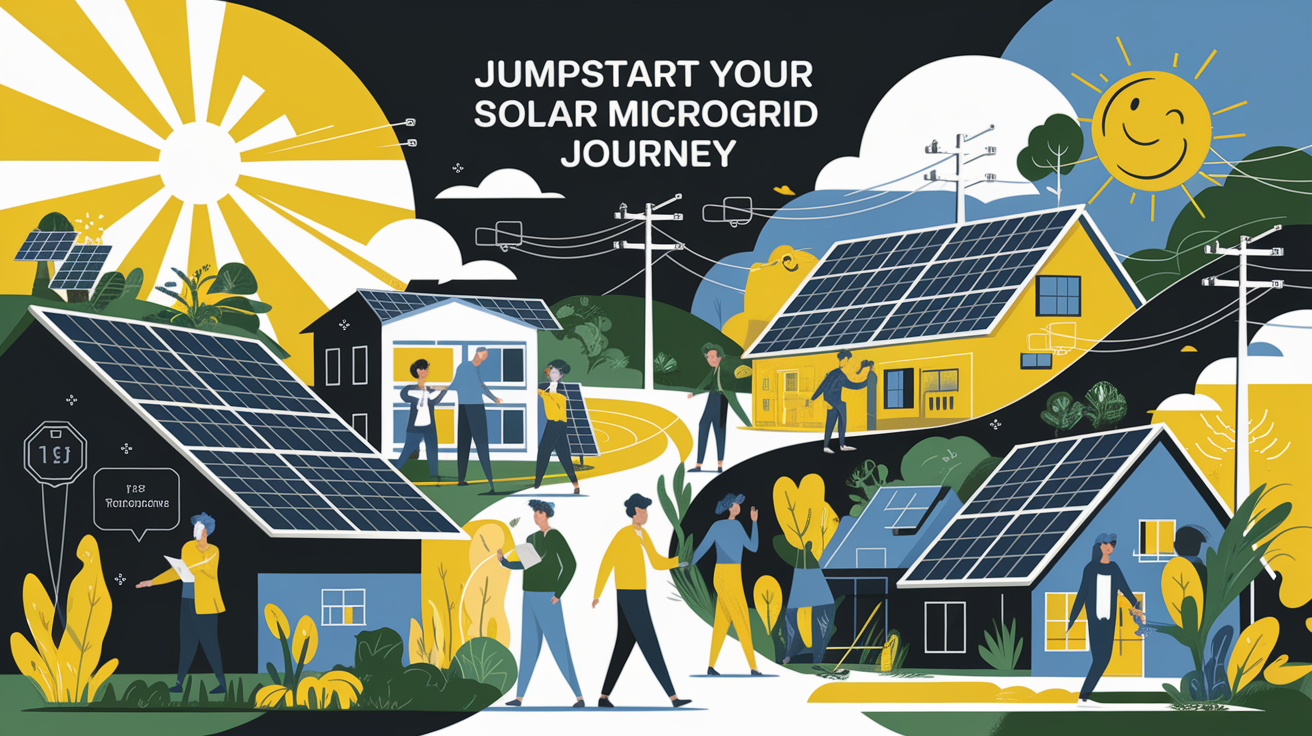Home Solar Microgrid Implementation: A Practical Step-by-Step Guide
Jumpstart Your Solar Microgrid Journey
Building a residential solar microgrid is no longer a futuristic concept—it’s an accessible, practical solution for achieving home energy independence, reducing electricity costs, and securing reliable power during outages. A solar microgrid combines solar panels, battery storage, and smart energy management systems to create a localized energy network that can function in tandem with, or independently from, the main utility grid. By operating in “island mode” during disruptions, your home remains powered without depending on costly and polluting fossil fuel generators.

For homeowners looking to proactively address rising utility costs, unpredictable outages, and sustainability goals, a well-planned microgrid offers both immediate and long-term benefits—including grid resiliency, electricity bill reduction, and lower carbon emissions.
Laying the Foundation: Planning Your Microgrid
Every successful solar microgrid project begins with clear objectives and careful design planning. Start by:

- Assessing your energy needs: Review historical electricity bills to calculate average consumption (in kWh). Identify critical loads like refrigerators, HVAC, or medical equipment that must remain operational in island mode.
- Determining operational mode: Decide between a grid-tie system or a fully off-grid system. A grid-tie setup allows for net metering and backup capability, while off-grid relies completely on local production and storage.
- Site evaluation: Analyze roof space, orientation, and shading to optimize photovoltaic panel placement. If needed, evaluate ground-mounted arrays for larger installations.
Planning also involves understanding your distributed energy resources—solar PV, battery storage, and optional backup generator—and how they will be managed to balance load and supply efficiently.
Choosing Your Components
At the heart of a home microgrid are several key technologies that must work seamlessly together:

- Solar panels (photovoltaic cells): Select models with high efficiency rates (20%+). Match capacity to your household’s calculated energy needs.
- Battery storage systems (BESS): Lithium-ion options offer high cycle life and better depth of discharge compared to lead-acid. Size your storage to cover anticipated downtime or peak load shaving requirements.
- Inverter: A hybrid inverter supports both grid-tie and off-grid operations, enabling smooth mode transitions.
- Energy management system: A centralized control platform integrates solar production, battery usage, and load prioritization.
- Charge controller: Regulates voltage and current from solar panels to batteries, ensuring longevity and safety.
- Additional resilience features: Include islanding protection, smart meters for usage data, and a properly rated electrical panel.
For further technical depth, review the microgrid system introduction for details on component integration and compatibility.
Installation and Integration
Installing a home microgrid involves careful coordination between solar installers, electricians, and in some cases, local utilities. The process typically includes:

- Mounting solar panels and routing wiring to a central electrical point.
- Connecting the battery storage system with inverters and charge controllers.
- Integrating the energy management system to handle load control, demand response, and power quality.
- Testing both grid-connected and island modes to verify functionality, including backup generator engagement if installed.
Advanced systems may employ grid-forming inverters to maintain stable voltage and frequency, improving transitions between operational modes.
Permits and Regulatory Compliance
Compliance is critical for safety, performance, and eligibility for incentives. Homeowners should:
- Obtain building and electrical permits as mandated by local authorities.
- Secure utility interconnection approval for grid-tied systems—often tied to net metering arrangements.
- Ensure the system meets National Electrical Code (NEC) standards for residential renewable energy systems.
Working with certified installers who understand microgrid regulations accelerates approvals and guarantees compliance.
Budgeting and Financing Your Microgrid
The cost to install a residential solar microgrid varies widely—from under $20,000 for small grid-tie systems to over $60,000 for large-scale, fully off-grid setups with extended battery storage capacity. Key cost drivers include:
- Solar panel capacity (kW)
- Battery size (kWh)
- Inverter capabilities and control systems
- Labor and permitting fees
Evaluate available incentives such as the Federal Solar Investment Tax Credit (ITC), state rebates, and low-interest energy-efficiency loans. Properly structured financing can reduce the payback period to under 10 years, especially when offset by avoided utility charges and potential grid services revenue.
Operation, Monitoring, and Maintenance
Once installed, optimal performance depends on active monitoring and preventive maintenance:
- Use a dedicated monitoring system or smart meter to track production, consumption, and storage in real-time.
- Clean solar panels periodically to maintain efficiency.
- Update inverter firmware and EMS settings as required.
- Maintain battery health by keeping charging cycles within manufacturer guidelines.
Modern energy management systems allow remote oversight and automation of load balancing, boosting overall system efficiency and reliability.
Next Steps and Ongoing Success
A home solar microgrid is more than a hardware installation—it’s a long-term investment in clean energy self-sufficiency. As technology evolves, homeowners can integrate emerging solutions like vehicle-to-home charging, advanced demand response algorithms, or additional distributed energy resources to further improve resilience and efficiency.
To ensure ongoing success:
- Regularly review system performance reports to identify areas for optimization.
- Plan capacity expansions in line with household growth or new electric loads (e.g., EV chargers).
- Engage with local or online renewable energy communities for technology updates, best practices, and potential energy-sharing opportunities.
By combining informed planning, quality components, and proactive management, you can create a high-performing residential microgrid that delivers measurable environmental benefits, cost savings, and unmatched energy security.






